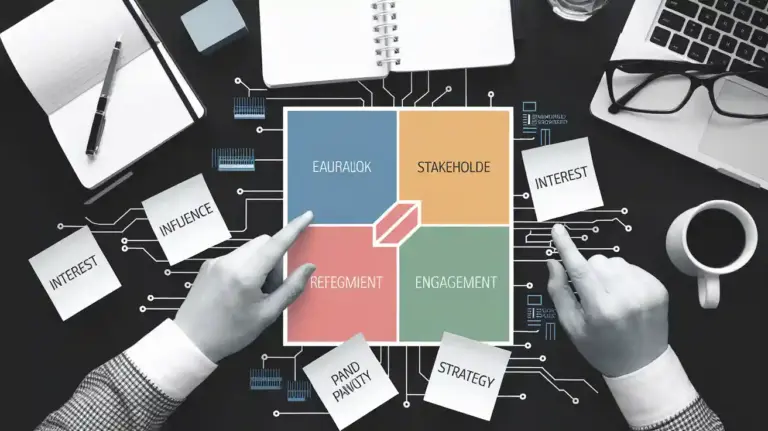Have you ever tried to implement a change in your organization, only to face resistance from employees and stakeholders? It can be frustrating and discouraging, but before you give up, it’s important to understand the psychology behind change resistance.
By understanding the mindset of those who are resistant to change, you can develop strategies to overcome their resistance and successfully implement your plans.
Change can be scary and unsettling for many people, and it’s natural to resist it. However, resistance to change can also stem from a fear of the unknown or a perceived threat to the status quo. These underlying reasons can be difficult to identify and address, but with a deeper understanding of the psychology of change resistance, you can create a more effective approach to managing change in your organization.
In this article, we will explore the reasons why employees and stakeholders resist change, and provide strategies for overcoming this resistance.
Why Employees and Stakeholders Resist Change
You may find yourself wondering why it’s so difficult for some people to adapt to new ideas or methods in the workplace. It can be frustrating when you’re trying to implement changes that will benefit the company, yet employees and stakeholders resist.
This resistance can stem from a variety of reasons, including cognitive biases and organizational culture. Cognitive biases are mental shortcuts that people use to simplify decision-making. While they can be helpful in some situations, they can also lead to resistance to change.
For example, confirmation bias is the tendency to search for, interpret, and remember information that confirms one’s preexisting beliefs. If employees believe that the current way of doing things is the best way, they may dismiss new ideas that challenge that belief.
Organizational culture also plays a role in change resistance. If the company has a culture of fear, where employees are afraid to speak up or take risks, they may resist change out of fear of repercussions. Additionally, if the company has a culture of complacency, where employees are comfortable with the status quo, they may resist change because they don’t see the need for it.
Understanding these factors can help managers and leaders address resistance to change and create a more adaptable workplace culture.
The Fear of the Unknown
Feeling uncertain about what the future holds can be a major hurdle when it comes to embracing new ideas and approaches. The fear of the unknown is one of the primary reasons why employees and stakeholders resist change.
People tend to cope with uncertainty differently, and some may find it difficult to manage anxiety brought about by change. In many cases, people resist change because they have formed a routine and are comfortable with the current way of doing things. The idea of doing something different can be overwhelming, and the unknown outcome can be unsettling.
It’s important to understand that people are naturally wired to avoid uncertainty because it can trigger a fight or flight response. As a result, employees and stakeholders may resist change even if they know that it’s essential for the growth and success of the company. Managing anxiety and coping with uncertainty is crucial when it comes to embracing change.
As a leader, it’s important to communicate the vision and goals of the change clearly and explain how it will benefit the organization. Providing support and resources to help employees and stakeholders adjust to the new reality can also help ease anxiety. By acknowledging the fear of the unknown and providing guidance and support, leaders can create a culture that is open to change and willing to take risks to achieve success.
Perceived Threats to Status Quo
When something threatens what you’re used to and comfortable with, it’s like a giant boulder rolling towards you, ready to knock you down. This is especially true when it comes to changes in the workplace.
Employees and stakeholders may perceive these changes as threats to the status quo, which can trigger a range of coping mechanisms. One common coping mechanism is denial. People may refuse to acknowledge the need for change or the potential benefits of it.
This can be due to cognitive dissonance, where individuals hold conflicting beliefs or values. For example, an employee may believe that their current way of doing things is the best, but also acknowledge that the company needs to improve. This conflict can lead to resistance to change, as it challenges their beliefs and values.
Another coping mechanism is avoidance. Employees may try to avoid the change altogether, either by ignoring it or finding ways to work around it. This can be detrimental to the company, as it can lead to decreased productivity and missed opportunities.
To overcome resistance to change, it’s important to understand these coping mechanisms and address them head-on. By acknowledging the perceived threats to the status quo and providing support and resources for employees, stakeholders can be more open to change and embrace new ways of doing things.
Strategies for Overcoming Change Resistance
If you’re looking for effective ways to tackle the challenge of adapting to new circumstances, take a cue from the great military strategist Sun Tzu and remember that flexibility and adaptability are key to achieving victory in any situation. The same goes for overcoming resistance to change in the workplace.
One of the most effective strategies for dealing with change resistance is effective communication. This means taking the time to listen to employee concerns and addressing them in a clear and concise manner.
Another strategy for overcoming change resistance is leadership support. When leaders show their support for change initiatives, employees are more likely to get on board. This can be done through clear communication of the benefits of the change and by providing resources and training to help employees adapt.
Leaders should also be willing to listen to feedback and make adjustments as needed to ensure that the change is successful.
In summary, overcoming change resistance requires a multifaceted approach that includes effective communication and leadership support. By taking the time to listen to employee concerns and providing the necessary resources and training, leaders can help employees adapt to new circumstances. With the right strategies in place, change can be seen as an opportunity for growth and development, rather than a threat to the status quo.
Embracing Change and Fostering Adaptability
Embracing change and fostering adaptability is crucial for success in today’s ever-changing business world. Developing resilience is a key factor in embracing change. Resilient individuals are better equipped to handle setbacks and bounce back from challenges.
Building a growth mindset is also essential in fostering adaptability. A growth mindset is the belief that skills and abilities can be developed through dedication and hard work. Individuals with a growth mindset are more open to learning and trying new things, making them more adaptable to change.
To develop resilience, individuals must learn to manage stress and cope with adversity. This can be achieved through various techniques such as meditation, exercise, and seeking social support. By managing stress and building strong relationships, individuals can better handle change and uncertainty.
Additionally, building a growth mindset involves embracing the concept of lifelong learning. This means being open to new ideas and experiences, seeking out feedback, and continually developing new skills. The ability to learn and adapt is essential in today’s fast-paced business environment.
Incorporating these strategies into your mindset can help you not only embrace change but also thrive in it. By developing resilience and a growth mindset, you can become more adaptable to new challenges and opportunities.
Remember, change is inevitable in today’s business world, and those who can adapt are the ones who will succeed. So, take a proactive approach to embracing change and building your adaptability, and you’ll be well on your way to achieving success.
How Can Understanding the Mindset of Employees and Stakeholders Help in Managing Resistance to Change?
Understanding resistance to change psychology is crucial for effectively managing employees and stakeholders during periods of transition. By comprehending the mindset of those affected, leaders can address fears, concerns, and uncertainties, and implement strategies to mitigate resistance, ultimately leading to a smoother and more successful change process.
Conclusion
Congratulations, you’ve successfully learned about the psychology of change resistance and how to understand the mindset of employees and stakeholders.
While change is necessary for growth and progress, it can also be met with resistance. But why do employees and stakeholders resist change?
One reason is the fear of the unknown. People like to stay in their comfort zones and are hesitant to try new things, especially if they don’t know what the outcome will be.
Another reason is the perceived threats to the status quo. People may feel like they’ll lose their power, position, or influence if the change is implemented.
However, there are strategies that can be used to overcome change resistance. By embracing change and fostering adaptability, you can create a culture that’s open to new ideas and willing to embrace change.
It’s important to communicate the reasons behind the change and involve employees and stakeholders in the process.
Did you know that according to a study by McKinsey, only 26% of transformation initiatives succeed? This highlights the importance of understanding change resistance and implementing effective strategies to overcome it.
By taking the time to understand the mindset of employees and stakeholders, and addressing their concerns, you can increase the likelihood of success and achieve your desired outcomes.
Remember, change isn’t easy, but with the right approach, it can be a positive and transformative experience for everyone involved.





